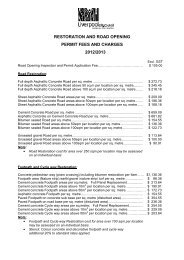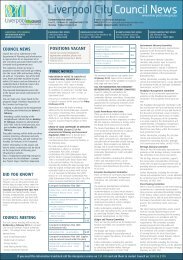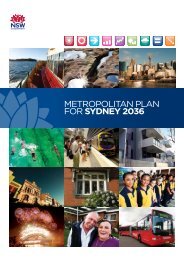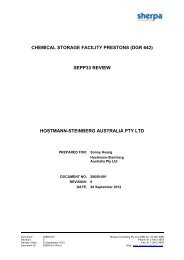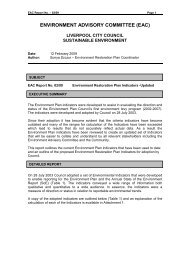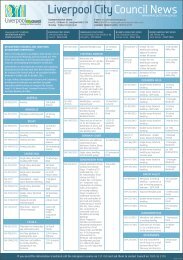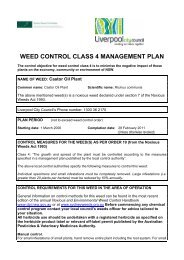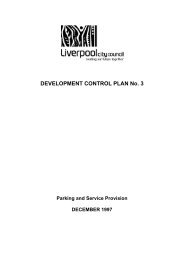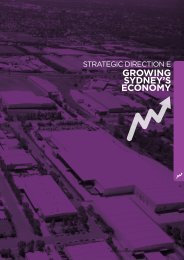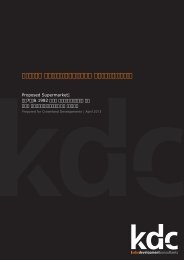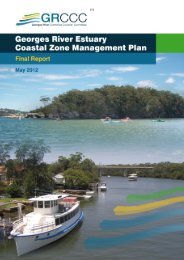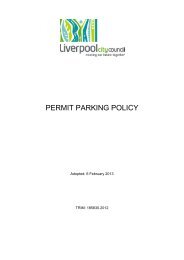to view the WARR Strategy. - Liverpool City Council - NSW ...
to view the WARR Strategy. - Liverpool City Council - NSW ...
to view the WARR Strategy. - Liverpool City Council - NSW ...
Create successful ePaper yourself
Turn your PDF publications into a flip-book with our unique Google optimized e-Paper software.
6.4 Charging for Waste Management Servicesa) Strategic ObjectiveTo develop, implement and/or maintain a transparent waste-charging scheme that providesfor full cost recovery whilst encouraging sustainable waste practices amongst service users.To maintain service costs per household for recycling within good practice performancemeasures as published by DEC.b) Current PracticesAt present <strong>Council</strong> charges its residents an annual waste management charge, which appearsas a separate item on rate, notices. The charge is levied on residential rate-paying propertiesas required by <strong>the</strong> Local Government Act 1993.With <strong>the</strong> expiry of <strong>Council</strong>’s garbage collection contract in December 2007 an opportunityexists <strong>to</strong> introduce a variable rate charging system that aims <strong>to</strong> provide financial incentives<strong>to</strong> residents <strong>to</strong> reduce waste, increase recycling and achieve cost savings.In developing a variable rate charging system, an important part of encouraging wastereduction will be <strong>the</strong> linking of waste levels <strong>to</strong> charges. This can most practically be donewith a different price for garbage bin capacity (volume based charging), for example, a $50 -$80 annual surcharge for a households opting for a 240L garbage bin over a standard 120Lbin.In introducing a variable rate charging system, <strong>Council</strong> may need <strong>to</strong> consider <strong>the</strong> potentialimpacts on low-income households and include measures <strong>to</strong> address <strong>the</strong>se.Alternative user pay systems include those based on frequency of lifts, weight-basedsystems, number of allocated waste bins and rate based charging systems (where <strong>the</strong> wasteservice charge is linked <strong>to</strong> <strong>the</strong> assessed value of each property).c) Information SourcesEkins P. and Dresner S. (2004), Green Taxes and Charges - Reducing <strong>the</strong>ir Impact on Low-Income Households, ISBN 1 85935 246 4, Joseph Rowntree Foundation (www.jrf.org.uk)<strong>Liverpool</strong> <strong>City</strong> <strong>Council</strong>63Waste Avoidance and Resource Recovery <strong>Strategy</strong>



